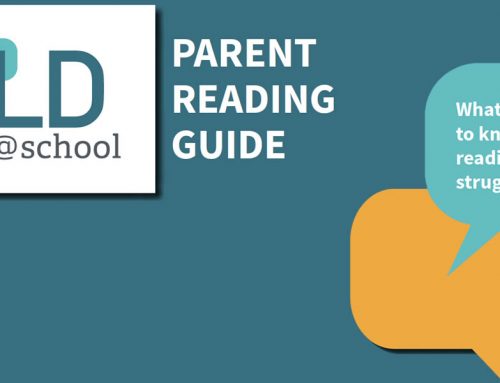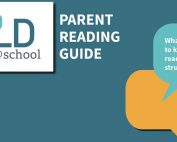Children with LDs often have difficulty using a phonics approach to reading as they have difficulty with phonemic awareness, or hearing different sounds. A different approach to reading – one that does not rely on hearing sounds – is using morphemic awareness. Research has shown this to be extremely effective with children of all ages, starting from age 7 or 8.
Morphemes are the smallest units of meaning in a language – either in whole words or in parts of words. Morphology, the study of morphemes, explains the basis for our spelling system. People may understand morphology best when thinking about affixes (prefixes and suffixes) and root words: these are the three types of morphemes.
For instance, the word unzipped has three morphemes: the prefix un- which means “not” or “opposite;” the root or base word zip; and the suffix –ed which indicates that this was an action done in the past. Understanding morphology helps a reader determine the meaning of an unfamiliar word by enabling the reader to segment, or break down, a word into its root word and its affixes. This also helps readers better understand meaning and also spelling.
Developing morphemic awareness is something that family members can support easily at home. Explicit teaching of common prefixes, suffixes and root words can be part of daily routines. This need only take 10 minutes each day – possibly before or after breakfast or dinner. Doing this as a game will be most effective.
You will need a package of 3 X 5 file cards and, ideally, three different coloured markers. As with all learning, it is important to start small, with just a couple of prefixes and suffixes and one root word, adding more as the child masters the first ones.
For instance, you might write the prefixes re- and pre- on the file cards and also the suffixes –ed and –ing. Cut the file card to fit the morpheme, cutting particularly closely to the end of the prefix so that it will fit right next to the root word, and particularly closely to the beginning of the suffix, for the same reason.
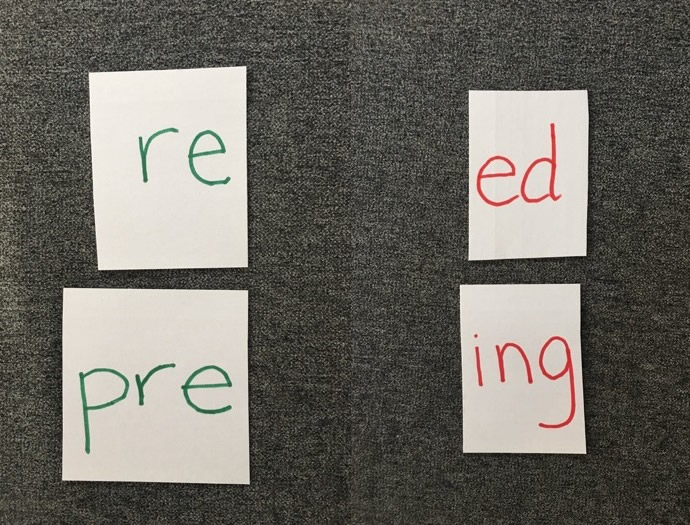
Then select a simple word for your root word, such as the word ‘sort’ and write that on another file card.
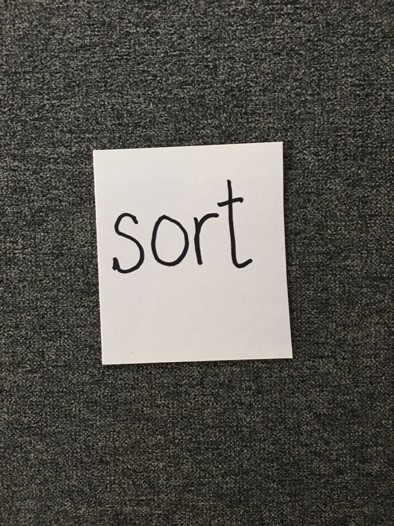
Then teach your child the meanings of the prefixes and suffixes and discuss the meaning of the root word, sort.
| re- | again; back |
| pre- | before |
| -ed | in the past |
| -ing | in the present |
Then, combine a prefix with the root word and have your child tell you what it means. Then go back to the root word and either add a different prefix or add a suffix and again ask your child the meaning. Then have the child choose a suffix or prefix and continue with the child telling you the meaning of the new word.
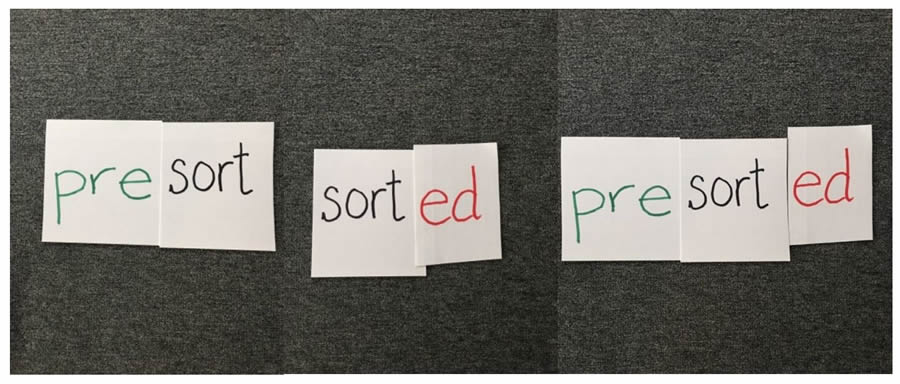
Ideally, prefixes will all be written in one colour, the suffixes in a different colour and the root words in a third colour. Here the prefixes are written in green (like the “go” colour on a traffic light, signaling the beginning of the word), the suffixes in red (“stop” on a traffic light, signaling the end of the word) and root words in black. The next day, review the meanings of the prefixes and suffixes, repeat the exercise, and if there is time, add a new root word, making sure that it is simple. Do not add more prefixes or suffixes too quickly: it is much more important for the child to internalize the meanings of the morphemes and this can be done by adding new root words.
Keep reviewing learned morphemes and slowly adding new ones. According to Honig et al (2000), the four most common prefixes in English (dis-, in/im-, re- and un-) account for 97% of prefixed words printed in school English and the same is true for the four most common suffixes (-ed, -ing, -ly, -s/es). Keep the prefixes together in one bundle, suffixes in a second bundle and root words in a third. Within a few days, the child can select her/his own affixes and root words, identify them, and use them to make new words.
Start working on your child’s morphemic awareness today using the following lists of affixes:
Click here to access a list of common prefixes and suffixes
Click here to access a fuller list, including root words and their meanings. (More suitable for older children)
Reference:
Honig, B., Diamond, L. and Gutlohn, L. (2000.) Teaching Reading Sourcebook: For Kindergarten Through Eighth Grade. Arena Press.
About the author:
Dr. Deborah Berrill
Professor Emeritus and Founding Director
Trent University School of Education & Professional Learning
Dr. Berrill has been involved in education for over 35 years, initially as a classroom teacher and later as a member of the Queen’s University Faculty of Education. Dr. Berrill then became the Founding Director of the Trent University School of Education and Professional Learning, where she developed a mandatory course for B.Ed. candidates entitled Supporting Literacy and Learners with Special Needs.




